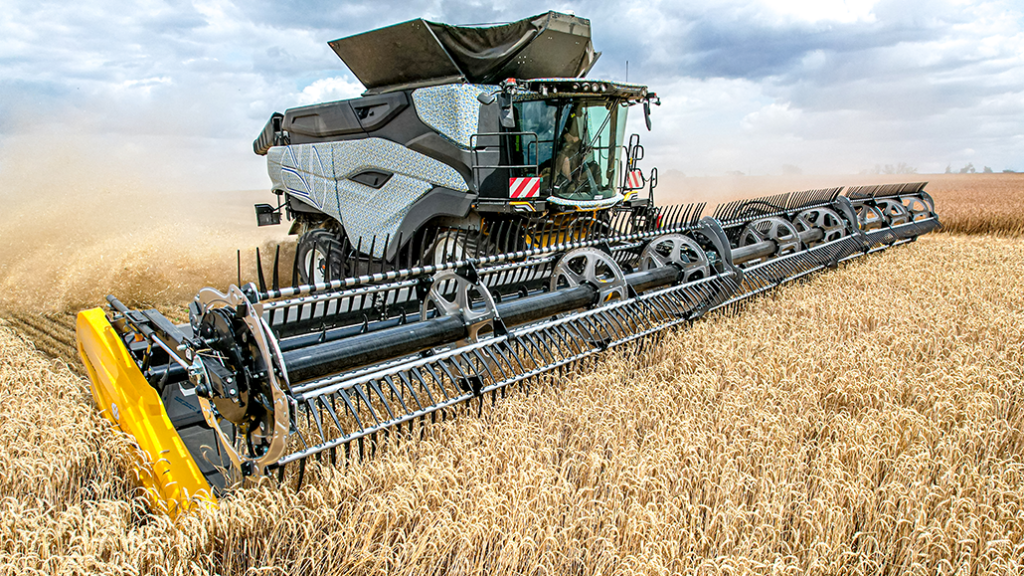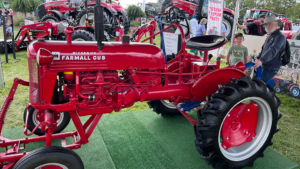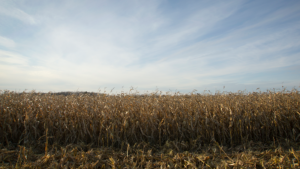European machinery technology
AGRITECHNICA RETURNS AFTER FOUR-YEAR HIATUS

EVERY SECOND YEAR, Agritechnica, the world’s largest trade fair for agricultural machinery and equipment, takes place in Hanover, Germany. After a four-year hiatus due to Covid-19, the German Agricultural Society (DLG), the trade fair’s organizer, is set to open its doors to 450,000 visitors. At a press preview event in September, the DLG unveiled the 18 Innovation Award winners and provided journalists with an opportunity to meet one-on-one with machinery and tech companies to learn about newly launched technology.
Of the 18 innovations, only one was awarded a gold medal this year. The gold medal went to New Holland for its CR twin axial rotor combine harvester. New Holland was awarded for having developed a completely new drive technology that is said to maximize power, boost harvest capacity, and significantly reduce grain loss.
Traditionally, increasing harvest capacity has meant widening the combine. But as New Holland global product manager Geert Nerinckx points out, it’s not possible to widen next-generation combines as they have pretty much hit their limit in terms of size and weight. New Holland’s innovative design not only boosts productivity, but it does so without increasing the overall size of the equipment, he said.
“It is still within the size limits and the weight limits to go on the road today or to go on the field to reduce the ground compaction,” said Nerinckx.
New Holland achieved this by mounting the engine longitudinally according to the rotors’ angle of inclination. The split-power gearbox drives the rotors and harvesting headers using an intake chain mounted in a straight line via the propeller shaft located on the right-hand side of the chassis above the level of the rotor housing. The left rotor now serves as a countershaft for the feed drum. As a result, no drives are situated on either side of the chassis between the chassis and the running gear, which means the overall chassis width is considerably increased. The extra space has made it possible to widen the threshing channel, which, in turn, has increased overall threshing capacity.
The cleaning system has also been revamped. It is now fully automated and 13 per cent wider. The grain elevator loading system has been optimized with hardly any intervention from the drive. Pressure sensor-supported control technology measures harvested crop distribution separately on the front and rear upper sieve. Lateral shaking solves the problem of uneven distribution. The straw chopping and distribution system is equipped with camera technology, increasing the combine’s efficiency.
“Grain loss is a big cost for customers,” said Nerinckx. “We achieved grain loss levels close to zero.”
University of Hohenheim professor Stefan Böttinger, deputy chairman of the Agritechnica Innovation Awards Commission, said he is greatly impressed by the new combine.
“It’s an extraordinary, very new concept,” he said at the preview event in Kassel, Germany.
REDUCING FUEL AND EMISSIONS, BOOSTING PRODUCTIVITY
Agritechnica’s Innovation Awards Commission issued 17 silver medals this year as well. Not all are a fit for the Canadian market, but some incorporate technology that is definitely interesting. For instance, New Holland developed a fully electric utility tractor and a methane-powered tractor that can use liquefied natural gas. Likewise, Steyr introduced its Hybrid CVT tractor, a concept tractor that aims to reduce fuel consumption and overall emissions.
Amazone developed CurveControl for centrifugal spreaders, which addresses the issue of disproportionate fertilizer application on curves and corners. The technology was first introduced in Amazone’s sprayer technology but couldn’t be readily transferred to spreaders as the throw of centrifugal spreaders is up to twice its working width. That, and depending on the type of fertilizer being used, the application point is several meters behind the spreader, Dorina Henkelmann, international marketing and communications staff member at Amazone, explained. With CurveControl, she said, application inconsistencies are eliminated.
Case IH announced the launch of its forward-looking feed-rate radar for its axial-flow combine. The radar sensors, mounted on folding supports extending over the reels, measure crop condition, height, and density. The data is used as input variables for the throughput controller. Additionally, the sensors measure ground profile, which optimizes cutter bar height control. Philipp Pamme, product marketing manager for harvesting equipment at Case IH, said the radars reduce the total cost of ownership, as breakage and blockages are reduced. The system supports experienced drivers by allowing them to concentrate on other tasks, and inexperienced drivers, who can use the equipment at maximum efficiency with little training.
SOIL MONITORING EFFICIENCY
Finally, Precision Planting received a silver medal for Radicle Agronomics, a fully automated soil laboratory that allows professional agronomists to analyze hundreds of soil samples quickly and accurately. The lab is supported by a suite of tools, including GeoPress, a collection module that mounts to the back of a truck or quad. Collected soil is poured into the GeoPress system via a funnel, where it is blended and stored in a reusable tube. The tube has an RFID tag that records geo-location and additional field data, omitting the need for the previously used bag-and-tag approach. Back at the shop, the Radicle Lab holds up to 400 samples and produces results, sample by sample, in as little as 15 minutes.
The products and prototypes that receive Innovation Awards will be officially unveiled at Agritechnica. Often referred to as the world’s largest trade event for agricultural equipment and machinery, Agritechnica takes place at the fairgrounds in Hanover, Germany, from November 12 – 18. •
























